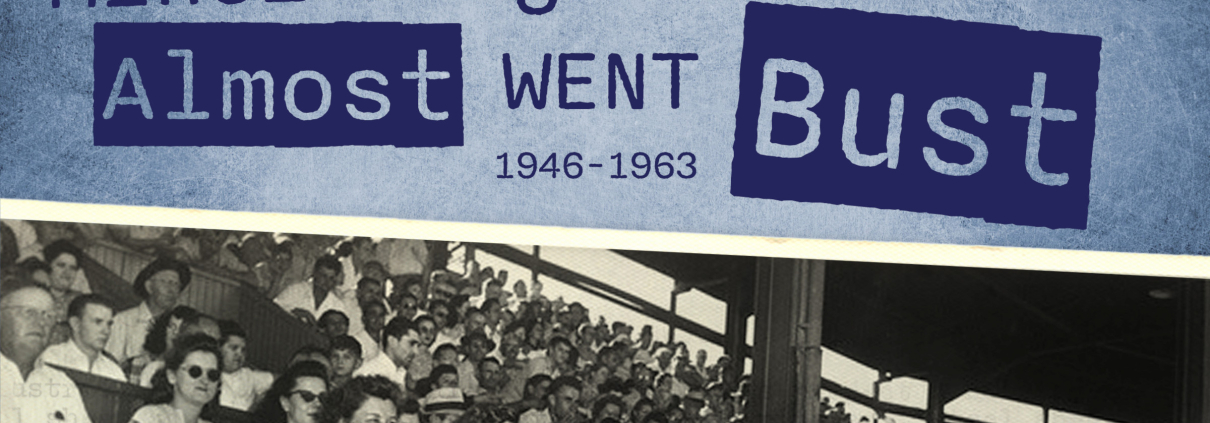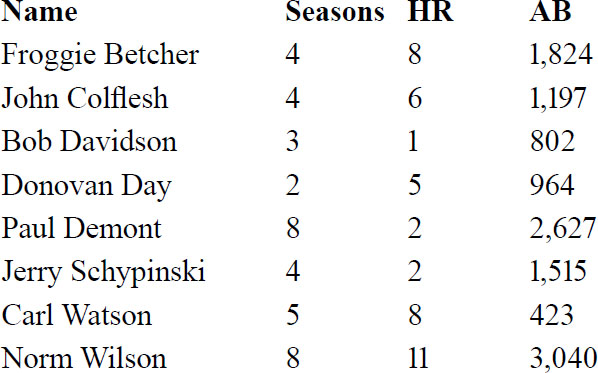The Power of One: Cordele Athletics Hit a Single Home Run in 1952
This article was written by Will Christensen
This article was published in When Minor League Baseball Almost Went Bust: 1946-1963
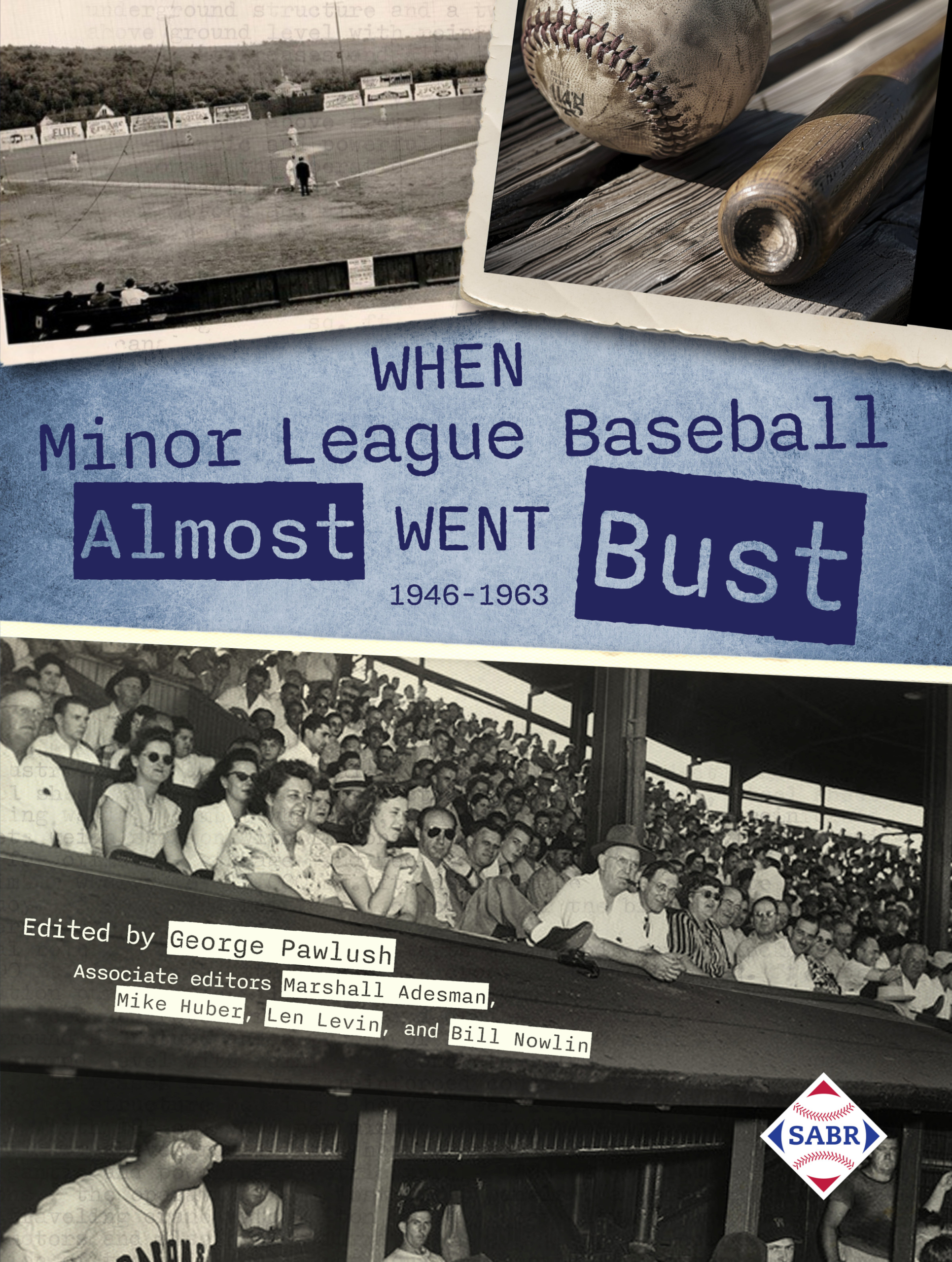 It looks like a misprint on the page.
It looks like a misprint on the page.
In the league stats for the 1952 Class-D Georgia-Florida League, under home runs, for Cordele it says “1.” Not 101, not 51, not even 21. Just 1.
It isn’t a misprint. The Cordele Athletics, a farm team of the Philadelphia A’s, hit exactly one home run in 1952.
It also isn’t a record. The Wilmington Sailors, playing in what almost certainly was the greatest pitchers’ league ever—the 1910 East Carolina League—were shut out in 88 games, and perhaps there were other teams during the Deadball Era that somehow avoided hitting a homer. That said, Cordele’s feat, in 139 games and at a time when homers were common, is notable.
Cordele’s lone homer was struck on July 3, which was the team’s 73rd game of the season,1 during a 14-2 blowout of Brunswick.2 The hitter was one Ralph “Froggie” Betcher, who connected off the unfortunately named Joe Super in the fourth inning.3
The game story out of Brunswick didn’t note the significance of the blast. In fact, it gave far more ink to the legitimately crazy play that preceded it. When Betcher stepped to the plate, the bases were loaded, yet his home run was a solo shot, because all three baserunners scored after a wild pitch by Super, an overthrow by the catcher to Super covering home and another throwing error to try to catch a runner at third. On the next pitch, Betcher homered.4
According to a story decades later, Betcher said it was a legitimate over-the-wall shot to center field,5 and the Brunswick account neither confirms nor refutes the location, although it did say the ball cleared the fence. In the later story, however, it was said to be during a home game, but the game in question actually was at Brunswick.6
Often, when you see this singular event mentioned, the author will note that the Georgia-Florida League wasn’t a homer haven. That’s true, and Cordele’s home park, named City Park back then,7 certainly seemed to curtail the long ball even though its center-field fence was only a reported 372 feet from home plate.8 Cordele’s teams finished last in homers four times in the nine years the city fielded a team after World War II.
But that 1952 season was just plain fluky. You almost have to try to not hit home runs to hit only one. The year before, Cordele hit 20 homers; the year after, 16. (It ranked seventh in the league in homers each year.) Interestingly, in 1955, now under the livery of the Baltimore Orioles, Richard Lubinski of Cordele led the league with 20 homers, and the team finished fourth overall in homers.
That 1952 team wasn’t a terrible team. In fact, the Cordele A’s finished 66-73 and in fifth place, which was the best finish for a team from Cordele after World War II. And it wasn’t just pitching that saved the day. The almost completely powerless offense finished fifth in the league in runs, because its OBP was a league-leading .361.
Manager Norman Wilson did a fantastic job of cobbling together a good offense consisting of guys who could barely hit the ball to the wall, let alone over it.
The 1952 Cordele team just didn’t have any power. Although it led the league in triples, the A’s hit only 133 doubles, which was last in the league by 20. This, plus the homer outage, led to the team’s .310 slugging average, which has to be among the lowest of any team after the introduction of the cork-center ball in 1910. Three pitchers in the league hit at least as many homers as the entire Cordele roster—or more—in 1952.9
And, in the end, it wasn’t just the league or the park. Of the 22 players who made the league stats in 1952 (at least 10 games played), only eight ever hit even a single home run during their minor-league career. Here are the homer hitters in chart form:
All told, players on the 1952 Cordele A’s hit 36 career homers in 14,947 career at-bats. Only Betcher and Day hit as many as five in a single season. Day, in fact, hit five in 1951 playing for Cordele. Schypinski actually made the majors, getting a cup of coffee with the Kansas City A’s in 1955. Unsurprisingly, he didn’t homer.
WILL CHRISTENSEN is a former journalist, avid researcher, and certified minor-league baseball nut. He has been a member of SABR since 1986 and has been interested in minor-league baseball most of the time since then. His first game to watch was the Columbus Jets during the team’s final season in 1970.
Acknowledgments
This article was edited by Thomas Rathkamp and fact-checked by Tony Escobedo.
Notes
1 “Minor League Class D Highlights,” The Sporting News, July 16, 1952: 39.
2 Associated Press, “Cards, Bears Lose Two in Georgia-Fla.,” Thomasville (Georgia) Times-Enterprise, July 4, 1952: 6.
3 “Pirates Defeated by Albany Cardinals, 4-1,” Brunswick (Georgia) News, July 5, 1952: 5. The July 3 game account was added to the bottom of the report of the July 4 Albany game.
4 “Pirates Defeated by Albany Cardinals, 4-1.”
5 Kevin T. Czerwinski, “Recalling a Once-in-a-Season Blast,” MILB.com, January 24, 2007, https://www.milb.com/news/gcs-151006.
6 “Pirates Defeated by Albany Cardinals, 4-1.”
7 “Cordele Fans Buy $10,000 in Tickets in 24-Hour Drive,” The Sporting News, November 30, 1955: 21.
8 Tim Hagerty, “Solo Homer: The Team That Hit Only One Home Run,” The Sporting News, November 9, 2014, https://www.sportingnews.com/us/mlb/news/solo-homer-the-team-that-hit-only-one-home-run-cordeleas/1kyyd0pj76eux1skw4mpwklhlz.
9 The homer-hitting pitchers were Fred Green (2), Don Robinson (2), and Fred Volk, although Robinson played as many games in the outfield as he pitched.
